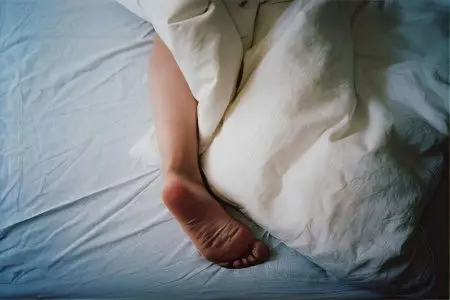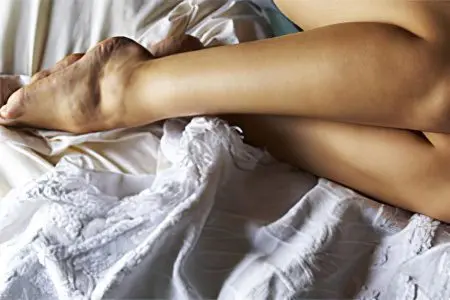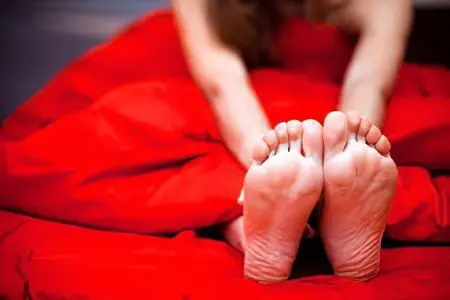Contents

Leg cramps at night bother many people. This condition cannot be called an independent disease, but it still violates the well-being of a person.
A cramp is a muscle spasm, in this case, the lower extremities. Moreover, this spasm occurs mainly at night. As a rule, night cramps do not last long, but even a short contraction of the calf muscles is enough to make a person wake up. Seizures can cause pain, which is sometimes very intense. The average duration of a spasm is 10 seconds.
Leg cramps at night can disturb a person of any age, even children, but the elderly complain about them most often.
Many are concerned about the question of why leg cramps most often reduce precisely at night, and not during the day. The fact is that muscle activity during sleep is minimal, and the air is often stuffy. Under such conditions, lactic acid begins to accumulate in the cells, which provokes a painful spasm. In addition, in people with vascular pathologies, venous outflow is imperfect, and arterial blood flow is insufficient. As a result, the tissues of the lower extremities suffer from oxygen starvation, to which they react with convulsions.
Causes of leg cramps at night

Each muscle cell is a carrier of an electrical discharge, since inside its walls are covered with potassium ions, and outside – with sodium ions. So that this ionic balance is not disturbed, the cells have special pumps. Ionic charges allow cells to contract.
When a cell is affected by nerve impulses, its charge becomes weak, as calcium and sodium ions penetrate inside, and potassium is excreted. When the cell contains calcium ions, its spasm occurs. It is this condition that a person regards as a cramp. To relieve a spasm, the cells trigger special pumps that pump potassium into it and remove calcium and sodium.
In addition to electrolyte imbalance, seizures can be caused by neurological problems, malfunctions in the blood supply system. Moreover, each of these causes can lead to the development of convulsions both by themselves and in combination with each other. It is necessary to dwell on them in more detail.
Violations of water and electrolyte balance
If the balance between the ions in the cells and in the extracellular space is disturbed, then a person develops a seizure.
The following pathological causes can provoke an imbalance of potassium, calcium, sodium, magnesium and chlorine ions:
Dehydration of the body. Dehydration most often leads to electrolyte imbalance, in which the blood becomes thicker, the sodium level in the blood decreases and muscle spasm develops. Also, convulsions will develop with massive blood loss, when the volume of circulating blood in the body sharply decreases.
Taking diuretics. If a person is self-medicating, or does not follow the doctor’s recommendations about taking diuretic drugs, then he may experience convulsions. In this regard, it is especially dangerous not to comply with the dosage of loop diuretics such as Furosemide, Lasix and carbonic anhydrase inhibitors (Diacarb). These drugs remove sodium and magnesium from the body, which contributes to the excitability of nerve endings and the development of muscle spasm. This problem is especially relevant for the elderly. They complain of night-time spasms and muscle twitching. Moreover, such convulsions can develop even simply by changing the position of the body.
Pregnancy. During the bearing of a child, a woman’s body often experiences a deficiency of various vitamins and minerals. They are spent on the needs of the growing fetus. Therefore, pregnant women often experience leg cramps at night.
Lesion of the liver. In cirrhosis, there is an imbalance between globulins and albumins. As a result, the patient may develop seizures.
Chronic renal failure. Patients who have to undergo regular hemodialysis procedures often experience leg cramps. (read more: Chronic renal failure)
Oxygen starvation of tissues

If the tissues of the body experience oxygen starvation, then this can provoke the accumulation in the body of metabolic products that have not undergone sufficient oxidation. Muscles subjected to hypoxia begin to contract, causing noticeable pain.
Varicose veins. Leg cramps are often experienced by people suffering from varicose veins. At the same time, the muscles spasm painfully at night, if during the day the load on the legs was great, for example, a person walked a lot. In this regard, not only dynamic, but also static overvoltage of the veins is dangerous. In addition to spasms in the legs, the patient has their swelling, in the evenings he will experience heaviness in them. The legs are riddled with veins and small capillaries that swell and show through the skin. Varicose veins, and hence spasms in the legs at night, are often companions of people working as hairdressers, teachers, and sellers. Also, varicose veins are often exacerbated in pregnant women.
Capillary damage. First of all, small arteries suffer from diabetics, smokers, and patients with intermittent claudication. The tissues of the lower extremities receive less nutrition due to disturbances in the flow of arterial blood to them. In addition to cramps at night, such people are concerned about pain in the legs when walking, deterioration in the sensitivity of the limbs, and a violation of their thermoregulation.
Flat feet. Anomalies in the development of the foot lead to the fact that the load on the muscles and ligaments is unevenly distributed. This becomes the main cause of cramps in the lower extremities. With flat feet, both blood vessels and nerve endings suffer at the same time.
Raynaud’s disease. This disease is characterized by a violation of capillary blood flow, which causes hypoxia of muscle tissue. As a result, a person often has cramps in the legs, the limbs freeze, and upon contact with cold, they turn blue and spasm.
Diseases of the nervous system

Leg cramps at night can disturb a person with diseases such as:
Osteochondrosis of the spinal column.
High body temperature that causes febrile convulsions.
Spastic paralysis can cause tonic cramps in the legs.
Infectious diseases, such as meningococcal disease.
Poisoning with alcohol-containing products.
Mushroom poisoning.
Bites of poisonous insects and snakes.
Stings of sea urchins and rays
Vitamin D overdose.
Other reasons

A disease such as hypoparathyroidism can be manifested by cramps in the legs. However, any damage to the parathyroid glands, accompanied by a decrease in their functions, will be expressed by muscle spasms.
In this case, convulsions will begin to affect the facial area, hands. The patient’s hair falls out, weakness and fatigue increase, and other symptoms characteristic of hormonal disorders in the body develop.
Taking birth control pills can cause leg cramps in women.
Magnesium deficiency, calcium deficiency and deficiency of B vitamins will lead to the development of leg cramps. With a lack of magnesium, a person suffers from insomnia, fatigue and irritability.
If a person is deficient in calcium, then the condition of his hair and nails worsens.
With a deficiency of B vitamins, in addition to convulsions, people experience tingling in the toes, general weakness increases, and efficiency decreases.
Alcoholism is one of the reasons for the development of leg cramps at night. Regular and prolonged intake of alcoholic beverages leads to the fact that B vitamins are washed out of the body, which affects the condition of the muscles.
Prolonged stress can lead to the development of leg cramps, since during such periods the body spends a lot of magnesium and B vitamins.
Video: Dr. Evdokimenko about leg cramps, how to treat?









